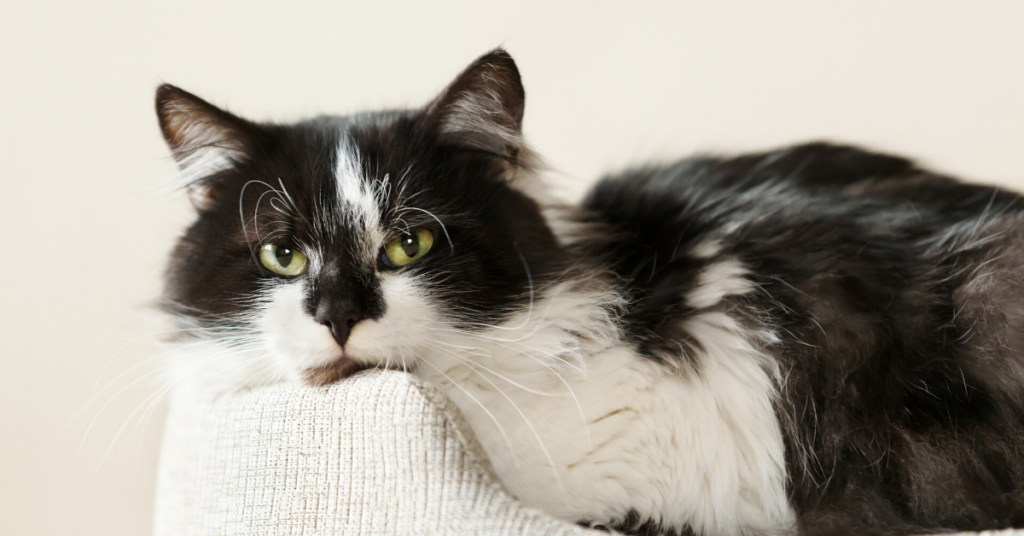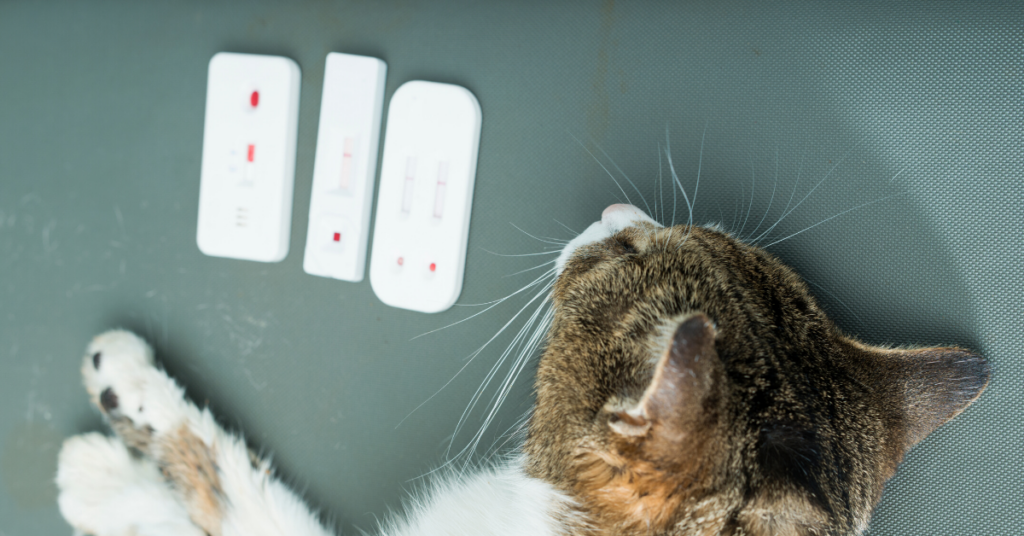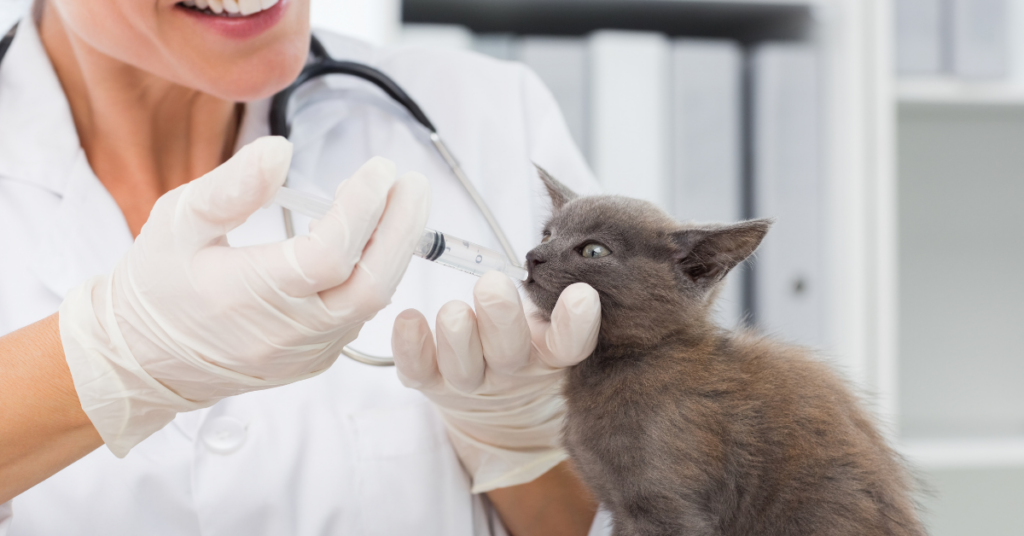Anemia In Cats (Complete Guide)
Anemia in cats is associated with the count of red blood cells.
It happens when the count of red blood cells decreases and becomes lower than normal.
Many diseases can cause the reduction of the number of red blood cells.
If the red blood cell count drops very quickly, the cat will need to be taken to an emergency clinic, for blood transfusions.
What is Anemia in Cats?

Anemia is actually a sign of another disease. It’s not a specific disease, rather the result of another disease process.
It happens when the healthy red blood cells count or the hemoglobin decreases in the blood.
Red blood cells are produced in the bone marrow, then they are released into the blood, where they circulate for about two months.
As red blood cells age or get damaged, they are removed from the bloodstream. After that, their components are recycled to form new red blood cells.
When they aren’t produced enough, their number will decrease.
Hemoglobin is an essential part of red blood cells. It’s job is to carry oxygen to the body’s cells and tissues.
That’s why when the red blood cells count or hemoglobin decreases, the cells won’t get enough oxygen, and won’t function normally.
Anemia has two types, regenerative and non-regenerative. Regenerative anemia happens when the body is producing more red blood cells.
However, non-regenerative anemia happens when the body is not making more red blood cells.
Signs of Anemia in Cats

The most common sign of anemia in cats is pale gums. When they appear as pale pink or white instead of the normal pink color.
Other signs include lethargy, low energy, increased heart rate in an effort to get oxygen to the cells that need it, loss of appetite, and in severe cases collapsing.
The symptoms of anemia vary based on how quickly the red blood cells count is dropping.
In severe cases, when the cat loses a lot of blood, it won’t be able to move, or collapse. If you notice any of these signs, you should call your vet immediately.
Causes of Anemia

Different diseases can cause anemia in cats. They are grouped in two groups, regenerative anemia, and nonregenerative anemia.
Causes of Regenerative Anemia
Blood loss, hemolysis, toxins, infections and genetic diseases cause this type of anemia.
Firstly, blood loss can be external or internal. Causes of blood loss include trauma, car accident, parasites, stomach ulcers which are linked to kidney failure, and tumors in the intestinal tract.
Secondly, hemolysis can cause regenerative anemia. It happens when the cat’s immune system attacks red blood cells because they look somewhat abnormal.
In addition, the cat may eat something toxic accidentally. These toxins can be a medication, toxic plants like oak or red maple, toxic foods like onions, or heavy metals like lead or zinc.
Bacterial or viral infections can also cause regenerative anemia.
Lastly, some breeds are prone to develop genetic anemia due to an enzyme deficiency, like the Abyssinian and somali breeds.
Causes of Nonregenerative Anemia
Causes of nonregenerative anemia include poor diet, chronic diseases, kidney disease, and bone marrow disorders.
Chronic diseases that can cause nonregenerative anemia include liver diseases, thyroid glands, and cancers. They cause inflammation, which results in decreasing the body’s ability to produce more red blood cells.
If the cat is suffering from a kidney disease, it may be the cause. The kidney is responsible for making a hormone called erythropoietin, which stimulates the body to make new red blood cells.
The kidney disease decreases the amount of this hormone, which results in less red blood cells, and eventually anemia.
Finally, bone marrow disorders can cause anemia. The bone marrow produces red blood cells, so if the bone marrow is affected, the production of red blood cells will decrease.
Most common diseases of bone marrow are feline immunodeficiency virus, feline leukemia virus, and cancer.
How to Diagnose Anemia

Anemia in cats is diagnosed by collecting blood samples and running tests, such as the complete blood count test (CBC).
This test will tell the vet how many red blood cells, hemoglobin, platelets, and white blood cells there are.
The CBC test will also tell the vet if the anemia is regenerative or nonregenerative.
Another test to diagnose anemia is the packed cell volume (PCV), also known as the hematocrit.
The normal cat has 25-45% red blood cells. If the PCV was below 25%, the cat is considered anemic.
If the blood test shows there is a low count of red blood cells, it’s important to know if the bone marrow is producing more red blood cells in compensation of the lost cells.
Some new red blood cells will be produced too early, and these immature red blood cells are called reticulocytes. These cells can be stained on a blood smear for easier analysis.
How to Treat Anemia

Treating anemia depends on the underlying cause behind it. When the vet identifies the cause behind anemia, he can recommend the suitable treatment for it.
Blood samples will be taken for diagnosis or blood typing. Treatments of anemia include deworming medications, corticosteroids, and sometimes surgery.
In severe cases, a blood transfusion may be necessary, to stabilize the cat while trying to diagnose the underlying cause and running tests.
How to Prevent Anemia

Since anemia is a symptom of different diseases, preventing it may not always be possible. However, there are some things you can do:
- Keep your cat healthy by feeding it a balanced diet
- Hide any toxins you may have around the house, and keep them in a safe closet
- Avoid having plants that are toxic to cats, since cats are curious & may try to eat them
- Use parasite preventatives which prevent fleas, ticks, lice, and intestinal parasites
- Have the cat tested for feline leukemia and feline immunodeficiency viruses
- Take your cat to the vet at least once a year, and do blood tests every one to three years
When to See a Veterinarian

If you notice that your cat is lethargic and isn’t able to run, jump, or play normally, has pale gums, or lost appetite. It’s a good idea to take it to the vet for diagnosis.
If your cat is unable to move or collapsed, call your nearest emergency clinic, to save your cat’s life.







